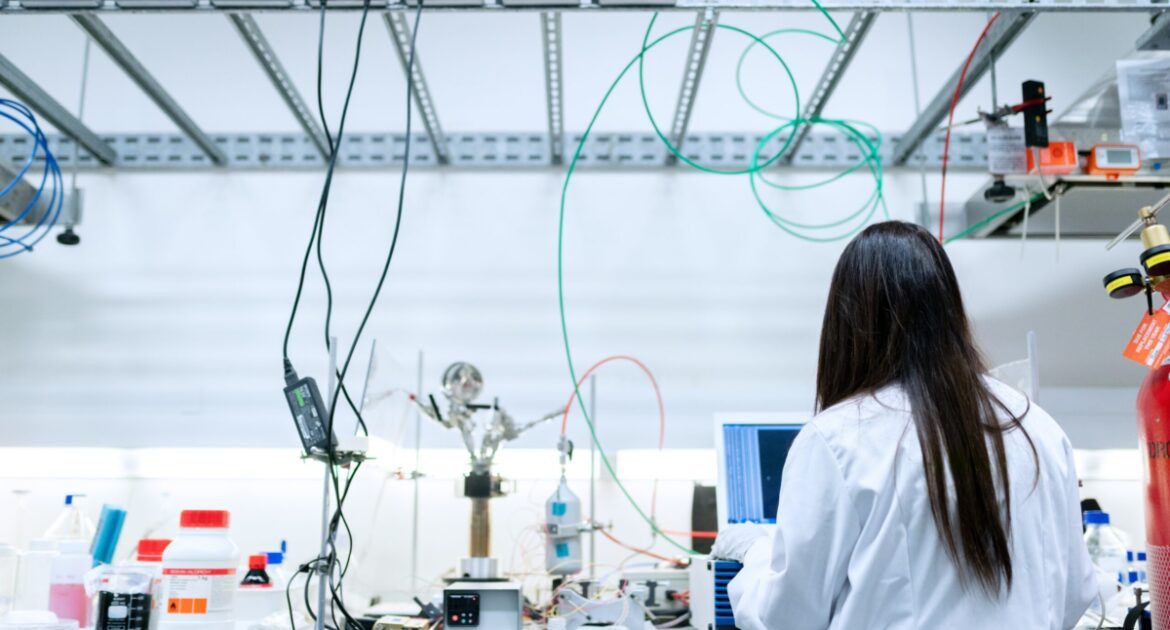Today’s post is written in honour of the Women in Engineering day, June 23rd 2023. This year’s topic is #makesafetyseen, and this post is dedicated to safety in the lab and field. I’ll be sharing my best tips for working safely in the lab and the field. Then, I will focus on some particular barriers women face when they want to work safely.
Working safely in the lab
When we talk about working safely in the lab, the first thing that comes to our minds is to use appropriate protective gear. We think about our goggles, safety boots, gloves, masks, hard hats and/or hairnets.
What we often forget, is that preparation is key. Thinking through all the aspects of our test setup and all the steps we go through during an experiment is important to be mentally prepared for our lab work. At the same time, asking ourselves what can go wrong at each step of the way, and charting the hazards is important preparation to be able to work safely in the laboratory.
Similarly, many elements of our protective equipment and the tools and parts we use have an expiration date. When was the last time you checked the expiration date on your hard hat? Have you checked if all lab equipment has the required safety certificates, and when the equipment needs maintenance to guarantee proper and safe operation?
As a civil engineering researcher with a focus on experimental work, I’ve learned two main lessons over the years. The first lesson I learned is to rely on the experience of the laboratory technicians. In the case of my research (which involves large pieces of concrete that are mock-ups of bridge elements, or sometimes life-size bridge elements), we always have to be at least two people during the test because of the high magnitude loads. I’ve learned from spending a lot of time working shoulder-to-shoulder with lab technicians that their practical experience is irreplaceable.
The second lesson I learned is to sweat the small stuff. When something goes wrong, it is often because of a small detail that is easily overlooked but can have major consequences. When something went wrong in the laboratory during my experiments and an unsafe situation resulted, it was in most cases the result of a small detail that didn’t work properly. Only once, the cause was related to a completely new observation that was not expected.
Working safely in the field
When we are doing fieldwork, we can think of various types of fieldwork, each with its safety challenges.
Ethnographers can be living in a community for a long time to collect data. Depending on the community, the safety hazards can be related to tropical diseases and other health risks, as well as general unsafety and risk of robberies.
Biologists may be camping out in a remote area to make particular observations. The safety risks can be related to getting lost, losing communication with the base camp or station, as well as health risks related to the environment in which the researcher is working and the climatic conditions one is exposed to.
As a civil engineering researcher, my fieldwork has consisted of testing bridges in the field. The safety risks are similar to those in the laboratory, with the additional risks from the environmental conditions: extreme cold and risk of frostbite, risk of sunstroke, hazards related to poisonous plants on the testing site, and the risk of electrocution under the combination of rain and electric equipment for carrying out the experiments.
From my fieldwork, I have learned two major lessons. The first one is that fatigue is a major hazard. When you need to work long days in the field because of pressures on your time and resources, getting tired can be a major risk. Being under the scorching sun, strong winds, or ice-cold weather is downright taxing. If you are camping out in difficult conditions, you may be unable to sleep well. When you are not rested, you can make mistakes which you would have never made when you’d have had the rest your body needs.
The second lesson that I’ve learned is to think about resources near the field location. In the case of our experiments, we are required to have a safety plan in place before testing. This plan will include important telephone numbers, as well as the route to the nearest hospital and pharmacy. Similarly, I recommend thinking about locations near your testing site where you can quickly buy appropriate resources. For the case of my research, identifying the nearest hardware store is crucial. Being able to quickly replace material is important to be able to work safely so that we do not remain working with worn-out or unsuitable tools.
Creating more inclusive working environments in the lab and field
There is still a lot of work that needs to be done to make lab work and field research more inclusive. I have walked into a hardware store to buy a new pair of safety shoes, only to find that women’s sizes are not available. In fact, I haven’t found women’s size safety shoes in a single hardware store in Ecuador… I have had my goggles fall down because the standard size is too large for my face. You get the picture – most “standard” size protective equipment in laboratories is made for men, and we know that ill-fitting personal protective gear is a safety hazard.
Similarly, a number of activities in the lab are developed for an average man. Yet, I’ve noticed that some standard protocols require more strength than some women researchers may have, and that the “standard” distances and measures of equipment may be uncomfortable for many women, who need to stretch themselves to be able to reach the parts or to operate the equipment.
Then, we need to consider that many women researchers are in their child-bearing years and may be pregnant while working in the laboratory. Doing lab or field work while pregnant is an entire challenge in itself, and a lot of activities we do in the lab or field may be simply not suitable for pregnant women. Looking through the documentation of research laboratories on safety, I’ve found only a few universities with clear guidelines for pregnant women (kudos to Princeton and the University of Auckland). And, for breast-feeding mothers finding a clean and quiet place to pump when doing lab- or fieldwork is a major challenge.
The barriers for women to work safely in the lab and field are significant. It is time that we have a serious discussion on how we can make our lab work and field research safe, for everyone. I’m calling here to broaden the debate and to discuss how we can create more inclusive working environments – not just for women, but for all of us who are not average-sized men.
Conclusion
To work safely in the lab and the field, we need to think through possible hazards and risky situations before we start. Besides good preparation to work safely, I have called attention to how standard protective equipment and laboratory devices are designed for an average man, which can make using these unsafe for women.
Related Articles:
- Social safety and inclusion at universities
- Mental Health Awareness for Managers
- Top tips for academic mentoring
- Women engineers who changed the world





Leave a Reply